History notes and photo gallery
Please note that this text is an extract from a reference work written in 1990. As a result, some of the content may not reflect recent research, changes and events.
a) HISTORY and BUILDINGS: Now one of the principal shopping streets of the town, London Road was a comparatively recent trackway through the North Laine when it was first developed in the 1810s and ’20s as a middle-class residential area known as Queen’s Road until about 1826. The first shops had appeared on both sides of the road to the south of Francis Street by 1840, and the conversion to shops was virtually complete when the road was widened in 1903 {83,114}. Although not particularly impressive from an architectural point of view, London Road has not been redeveloped as much as some streets and retains a number of original buildings on the western side. Several bow-fronted buildings still stand between Ann Street and York Hill, while a number of other grand residences may be seen above the projecting shop-fronts which were built on their front gardens. Nos.9-17, 32-37, 54, 56-57 and 68-72 are all decorated with pilasters, nos.56-57 have petal and wreath decorations as well. The eastern side of London Road retains only two early buildings, no.87 (see below), and one at the Open Market corner, no.109.
In the 1930s several large stores were opened, in 1931 for the Brighton Equitable Co-operative Society (see below), in 1935 for Marks and Spencer (now Peacocks, etc.), and in about 1936 for Roslings drapers (now Woolworths). The other large stores, Sainsburys, Gateway (as Bellmans) and Boots, adopted their present form in the early ’70s. {306}
The finest building, and the only remaining residential house in the road, is no.87, an elegant, listed house of about 1825 with fluted Ionic pilasters and an ironwork porch, which was probably designed by Charles Busby. In 1882 it became St Bartholomew’s vicarage, but it has recently become the home of the vicar of Brighton ( St Peter’s ) {44,46}. The adjacent Methodist church was built in 1894 for the Viaduct Road congregation, by James Weir in red brick with terracotta dressings; it was extended forward to the present line in 1910 in Renaissance style, but was remodelled in 1938 with the present rendered fa..cs.ade {62}. No.36a on the opposite side of London Road was once the Gem Electric Cinema, opened in 1910 by a Mr Thompson and operated with sixty seats until 1914 {68,68a}.
The Hare and Hounds at Preston Circus dates originally from about the 1820s, but was rebuilt in 1905; in the early nineteenth century the annual Brewsters’ Sessions were held on the upper floor {15,311}. Preston Circus itself was once dominated by the Amber Ale Brewery, but today’s wide junction was created in 1901 when the large brewery building was demolished to allow tram lines to be laid on a curve between Beaconsfield Road and Viaduct Road. The south-western range of buildings were erected in the 1930s along with the fire-station which dates from 1938.
Any numerical cross-references in the text above refer to resources in the Sources and Bibliography section of the Encyclopaedia of Brighton by Tim Carder.
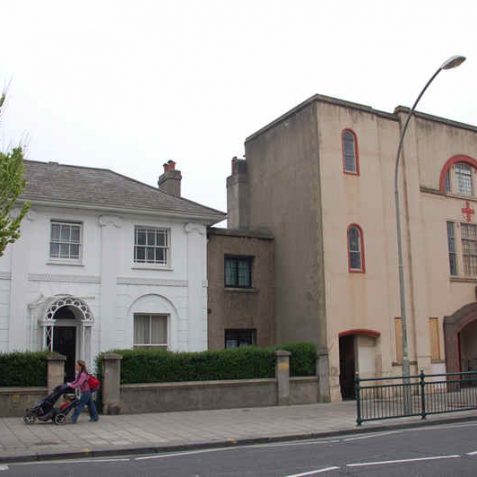
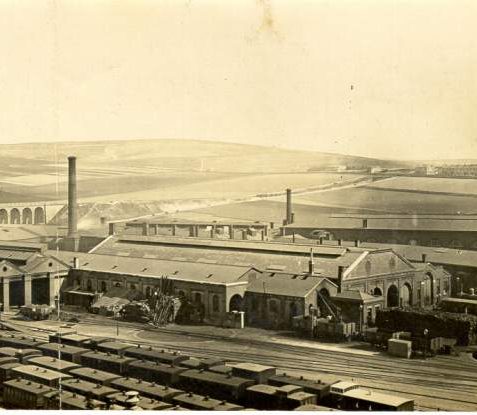
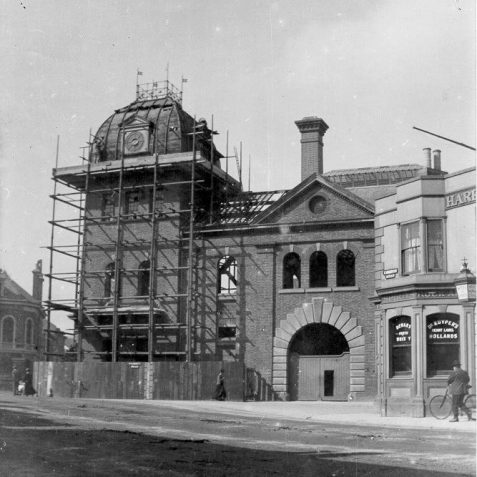
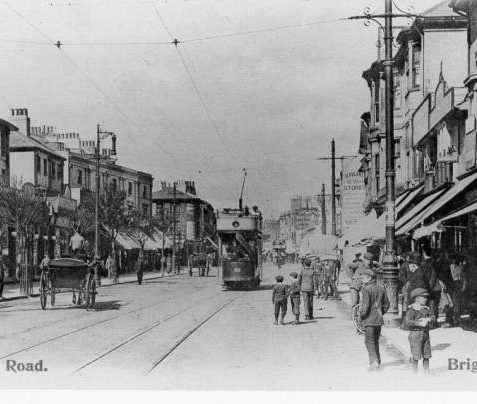
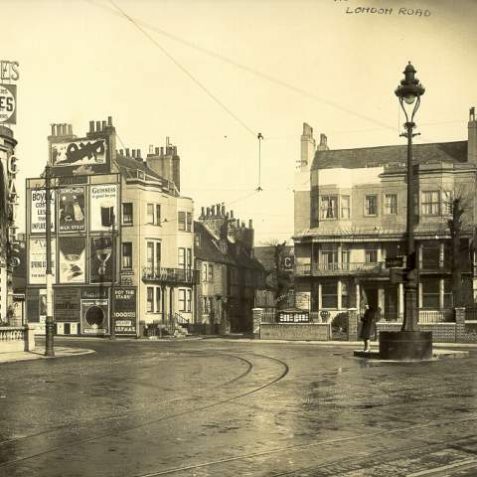
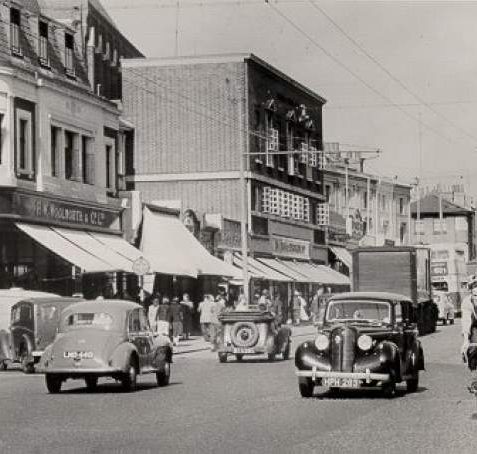
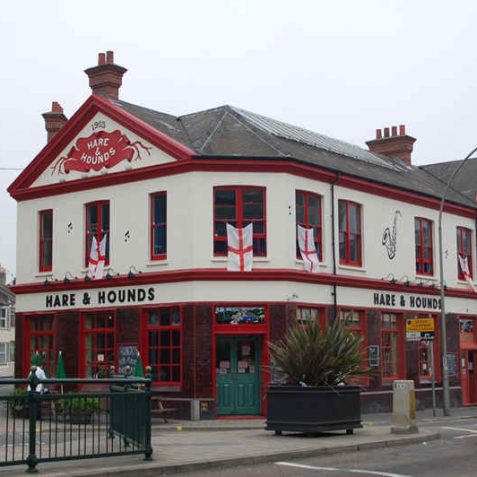


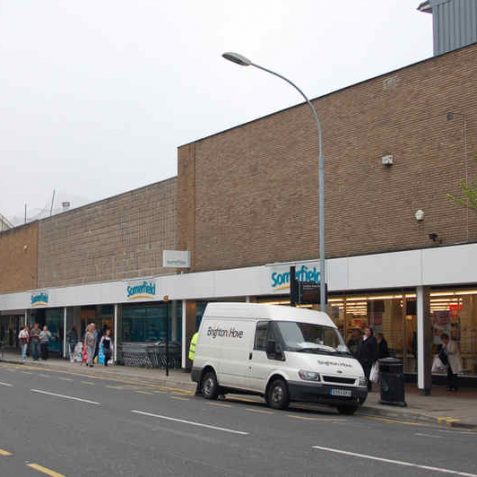
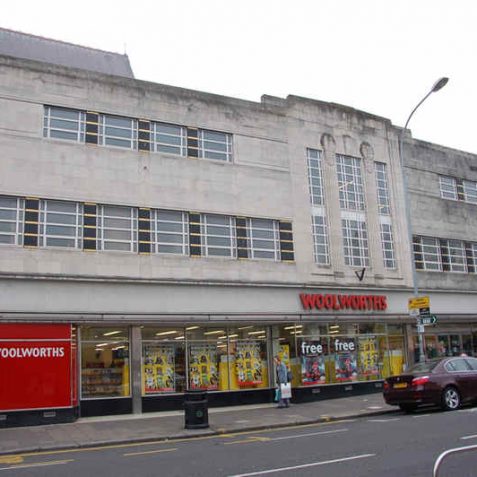
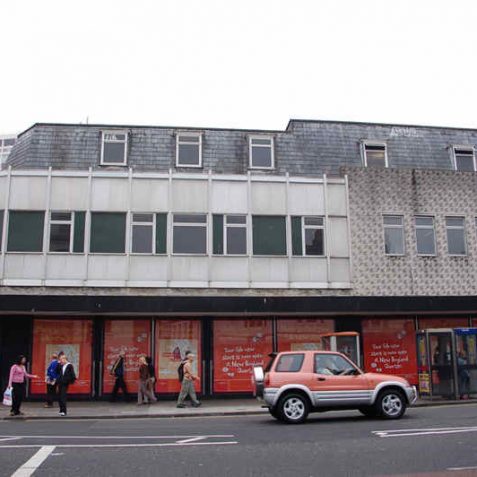




Comments about this page
Can anyone tell me if they know the whereabouts of the landlords of the Hare and Hounds from the sixties? I believe their names were Mickey and Iris Bloomfield. I would be so grateful if anyone can help.
Planning permission has been applied to demolish Woolworth’s and replace it with ground floor shops with flats above. The 99p store which has just opened there has a very short lease less than a year long. On the Woolworth’s picture page, can you answer my question about the hidden stairs leading to the lower floor?
Editor’s note: The best place to ask a question which will then be picked up by our team of local historians is on the Message Board
Woolworth’s closed the lower and upper floors in the 1970s, and did the same in Western Road and Worthing (where a 1950s sign pointing upstairs was uncovered when the shop closed). Does anyone remember the stairs just inside the entrance in London Road which went downstairs? What was sold down there? The stairs and railings were boxed in by a large display when the floor was closed. I was fascinated to see them uncovered recently and took photos of them through the window.
I remember the stairs very well from when I was a child. I can remember going downstairs and on the right they used to have the haberdashery section that sold wool and sewing stuff. Later on I seem to remember choosing my sweets from down there so they must’ve had them downstairs as well. I also remember getting told off by a member of staff for sticking my chewing gum underneath a shelf!
I’ve always seen this frontage above the nasty plastic of the modern shop fronts and been fascinated by it’s design. There is an opinion that London road is architecturally uninteresting, however above these shop fronts exist a number of completely unique facades, the like of which can be seen nowhere else. This building may be under threat from the redevelopment of London road.
What a lovely photo – one I would love to have a copy of, as my gt.gt. grandparents the Hayes family lived in the tall house on the corner for many years (the one with all the advertising boards on).
My grandfather, Robert Stace, ran the Queens Head Pub on Cheapside. I visited many many times from London with my family. He died in 1953. I actually went to school for some time nearby. Does anyone remember my grandfather and grandmother? They had a lovely dog called Peter. Does anyone have a photo of the Queens Head before it was demolished?
I remember the downstairs as well as an early teen, so around 20 years ago. Haberdashery like another poster. Closed after a fire they had. Cant remember upstairs? But do remember going in and out the rear entrance / exit.
I remember the Woolworth Store with heavy brown paper stuck on the windows (so you could not see inside) making wartime armourments. Mainly women were employed on huge benches. I don’t know what was produced. Does anyone else remember this? Also London Road being straffed by low flying German aircraft that just came down the road in a straight line, just machine gunning. People who had not managed to get to a shelter cowered in shop doorways.
Hi Simon, It’s a bit late but I’ve only just come across your question. As far as I remember the lower floor was closed after a fire in 1987 which turned out to be arson.
The cyclist is me (now aged 73). Judging by the shadows it is around lunch time, when I would be returning to work after going home for lunch.
I cycled this route twice a day from New England Road to Edward Street from around 1957 until 1960.
I somehow missed this ‘string’ which is a pity as London Road is one of the walks I lead in the Festival Fringe! My brother remembers M&S – large building north of Woolworths – being used for the construction of aircraft or glider wings in the war as he was down their with mum and London Rd was closed as they took the wings out onto a low-loader. The image is certainly pre-1953 as the building was extended south towards Woolworths in 1953. I worked at M&S from 1977 until it was closed in 1986.
Add a comment about this page